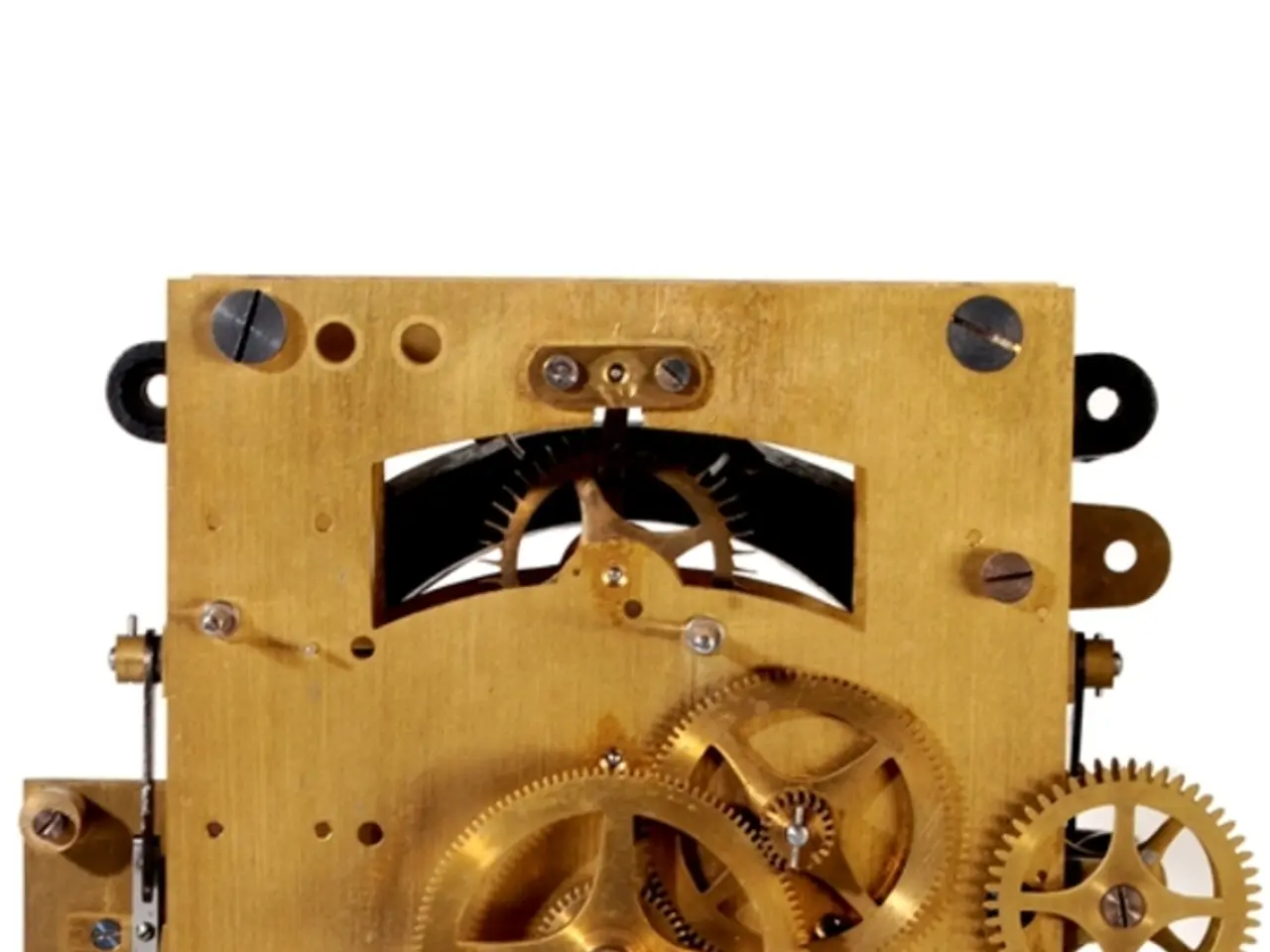Intel Facing Off Against NVIDIA and AMD: Does Intel Still Hold Ground in the Chip Squabble
In the competitive world of semiconductors, Intel is gearing up for a comeback. The tech giant has outlined an ambitious roadmap, focusing on AI chips, high-performance computing (HPC), and advanced semiconductor manufacturing as part of its strategy to regain its leadership position [1].
While Intel's strong presence in data centers and enterprise computing remains a significant advantage, the company has been playing catch-up in several key areas. Notably, in the AI sector, NVIDIA has established a commanding market share with its CUDA ecosystem and high-end GPUs, generating massive data center revenue [3].
NVIDIA's H100/H200 GPUs control around 80% of the AI chip market, and AMD also offers competitive solutions like the MI300X. In contrast, Intel's Gaudi 3 AI accelerators, while promising, have yet to make significant inroads [3].
The gaming and desktop CPU markets are another arena where Intel and AMD remain fierce rivals. Both companies are continually innovating and improving their offerings, but the landscape has been disrupted by Apple's move to ARM-based chips in laptops [1]. This shift has forced Intel and AMD to focus on efficiency standards to remain competitive.
Intel's manufacturing and innovation have faced criticism for lagging behind competitors, with its CEO acknowledging slow adaptation. This has affected Intel's market value, currently around $87 billion, in comparison to NVIDIA's $4 trillion [2][4].
To strengthen its AI portfolio, Intel is forging strategic partnerships and acquisitions. The company is also expanding its in-house chip manufacturing capabilities and opening them up to third parties through Intel Foundry Services [1].
Meanwhile, AMD has gained traction in the semiconductor industry, with its Ryzen and EPYC processors being a strong alternative to Intel in both consumer and server markets. AMD's reliance on TSMC's 5nm and 3nm technology has allowed it to surpass Intel in terms of efficiency and power consumption [2].
The future of the semiconductor industry will be shaped by Intel's ability to adapt and accelerate its technological advancements. Intel's Meteor Lake and Lunar Lake processors are anticipated to provide a significant boost in performance and efficiency, aiming to narrow the gap with AMD [1].
NVIDIA, too, is making significant moves in the CPU space, particularly in AI and machine learning applications. The company's acquisition of ARM (pending approval) could further disrupt the CPU landscape [4].
In summary, Intel is still a strong player with legacy strengths and evolving products, but it is not currently shaping the industry landscape as dominantly as NVIDIA, especially in AI and next-gen data center segments. Intel's comeback depends on catching up in innovation pace and market adoption of its AI and high-performance chips [1][2][3][4].
References: [1] Tom's Hardware. (2022, March 10). Intel's Meteor Lake and Lunar Lake processors could narrow the gap with AMD. Retrieved from https://www.tomshardware.com/news/intel-meteor-lake-lunar-lake-processors
[2] The Verge. (2022, March 10). Intel's CEO says the company is too slow to adapt to the chip industry's future. Retrieved from https://www.theverge.com/2022/3/10/22971354/intel-ceo-pat-gelsinger-interview-slow-adaptation-semiconductor-industry-chips
[3] AnandTech. (2022, March 10). Intel's Gaudi 3 AI chip takes on NVIDIA's H100/H200 in the AI sector. Retrieved from https://www.anandtech.com/show/17115/intel-gaudi-3-ai-chip-takes-on-nvidias-h100h200-in-the-ai-sector
[4] TechCrunch. (2022, March 10). NVIDIA's acquisition of ARM could further disrupt the CPU landscape. Retrieved from https://techcrunch.com/2022/03/10/nvidias-acquisition-of-arm-could-further-disrupt-the-cpu-landscape/
- Intel, despite its strong market presence in data centers and enterprise computing, needs to expedite its technological advancements to challenge NVIDIA's dominance, especially in the AI sector.
- Adept at AI and machine learning applications, NVIDIA's anticipated acquisition of ARM may potentially disrupt the traditional CPU landscape further, posing a significant threat to Intel's position.
- Intel's efforts to expand its AI portfolio through strategic partnerships, acquisitions, and in-house chip manufacturing could help it compete more effectively within the industry, particularly in Africa's nascent technology markets.
- The semiconductor industry's future finance dynamics may favor companies demonstrating rapid technological innovation and market adoption of AI and high-performance chips, making it critical for Intel to catch up in these areas to secure its comeback and maintain industry leadership.




